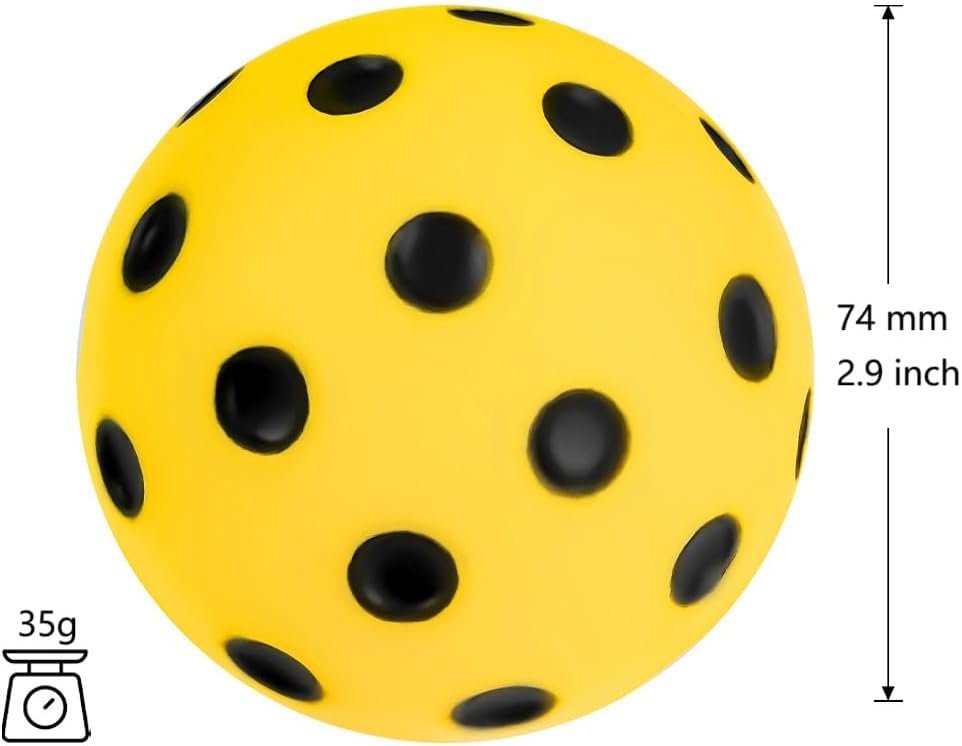As a pickleball enthusiast always on the lookout for innovative gear, I was thrilled to try out the Quiet Foam Pickleballs. Living in a neighborhood where noise levels can raise a few eyebrows, I was hoping these soft foam balls would allow me to practice my shots without disturbing the peace at those late-night hours or during quiet afternoons.
Upon opening the package, I was pleasantly surprised. The six-pack came with a handy mesh carry bag, an added convenience for transporting the balls to and from the court or my backyard. These balls are designed for a realistic gameplay experience while being markedly quieter than their plastic counterparts, which really intrigued me.
Let’s dive into the pros and cons based on my real-world experience:
Pros:
-
Noise Reduction:
The primary advantage is, undoubtedly, the noise level. I tested them during evening practices, and they were remarkably quiet—think library-quiet. This feature allowed me to practice without facing disapproving glances from the neighbors while I refined my serves and volleys. - Realistic Bounce:
The dense foam does an excellent job of mimicking the feel and bounce of traditional pickleballs. I found that I could perform various strokes—flat hits, spins, and even lobs—just as I would with a standard ball. Reviewer TP noted the soft silicone feel and commented on how they maintained similar playability but at a lower volume. I wholeheartedly agree.
Cons:
-
Bounce Height and Weight:
While the realistic feel is commendable, I did notice that the foam balls tend to bounce slightly lower than standard pickleballs, which some players may find a bit frustrating. Bruce mentioned that they felt "quite heavy," which can affect the timing of your shots. I can relate—if you’re looking for an exact replica of a regulation ball for competitive play, you might be disappointed. - Limited Use:
Because these balls lack the drilled holes typical of regulation balls, they aren’t suitable for regulated play. They stand as a great option for practice—especially in noise-sensitive environments—but won’t replace standard balls for competitive matches. This was something I had to keep in mind while using them, as noted by Tennessee Vol, who found them great for drills but not for actual gameplay.
In summary, while the Quiet Foam Pickleballs do exhibit some notable differences from traditional pickleballs, they fulfill their purpose wonderfully. They are ideal for anyone looking to practice without the worry of disturbing neighbors or causing damage to indoor walls, thanks to their soft, durable foam material. It’s great for beginners, seniors, or anyone easing into low-impact play.
So, do these balls meet my expectations? Absolutely! They have significantly improved my practice routine. I can focus on honing my skills without being conscious of noise—which I consider a win in my book!
Final Verdict:
If you’re seeking a quieter option for practicing your pickleball skills, these foam balls are definitely worth trying out. They offer a great balance of performance and convenience and come highly recommended for casual or home practice. Just keep in mind their limitations for competitive use—overall, I give them a solid 4 out of 5 stars!





